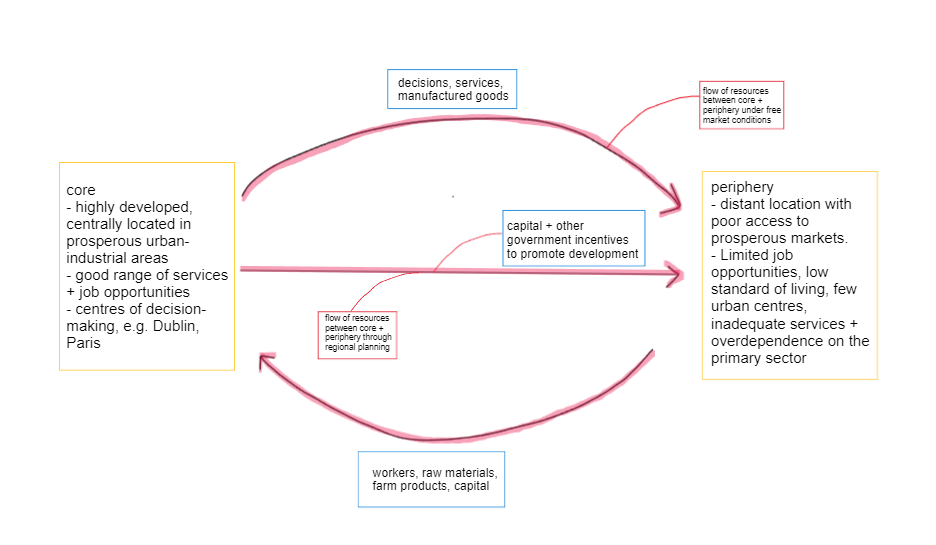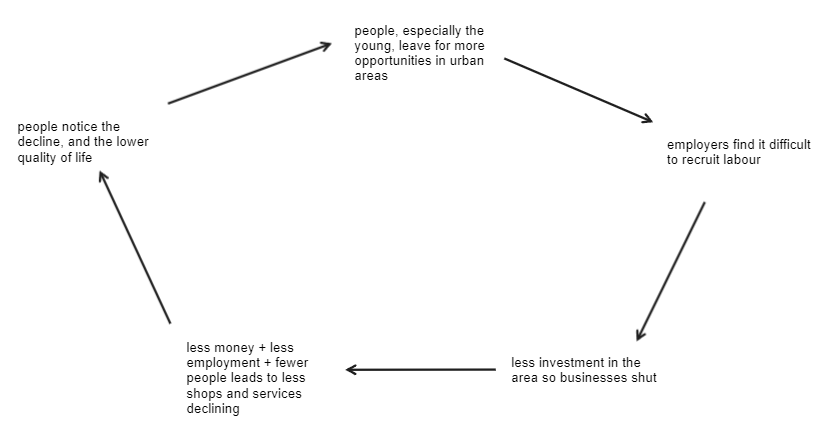Movement within the UK
- about 10% of people in the UK move per year
- some locally, while others move from one region to another
- one region’s net gain is another’s net loss → this regional movement of people is unrestricted + often linked to the changing labour markets
Reasons for internal migration
- Since the 1980s, deindustrialisation in N. Britain (e.g., steel) has driven many workers south in search of employment. The growth of footloose industries in the S.E. (e.g., electrical engineering + IT) has encouraged this, as has the growth of LDN’s knowledge economy (e.g., financial services).
- The regeneration of large cities has led to the in-migration of younger people for work, as well as the attraction to the urban lifestyle. By contrast, many older adults with families move from cities into rural areas, often for a slower lifestyle.
The North-South divide
UK’s North-South population drift accelerated during the 1980s
<<In 2015, for every 12 jobs created since 2004 in southern cities, only 1 was created in cities elsewhere<<
London’s global hub status means that the UK’s core-periphery and imbalance is likely to persist


| the North | the South | |
|---|---|---|
| economic activity | heavily dependent on the public sector | private sector dominant |
| incomes | lower incomes, e.g. in 2011 average household gross disposable income was £13,560 in the North East | higher incomes, e.g., in 2011 average household gross disposable income was £20,509 in London |
| unemployment | higher unemployment | lower unemployment |
| house prices | lower, average in North East: £154,000 | higher, average in South East: £305,000 |
| education | less likely to achieve straight A grades at A-Level and less likely to study at Oxbridge | pupils are 40% more likely to achieve top GCSE grades |
| life expectancy | lower, in Manchester 2013: 71.8 male, 77.8 female | higher, male in East Dorset 2013: 83.1, female in Kensington + Chelsea 2013: 84.7 |
Reasons for these differences:
- The south-east:
- has good communication links to Europe + the rest of the UK
- has a large pool of skilled and educated workers → people migrate to the area from other parts of the UK/world as it provides better job opportunities
- is less affected by deindustrialisation because there were fewer heavy industries